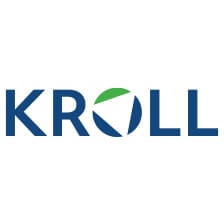Detailed content of our market study
 Inforamtion
Inforamtion
- Number of pages : 35 pages
- Format : Digital and PDF versions
- Last update :
 Summary and extracts
Summary and extracts
1 Market Overview
1.1 Definition and scope of the study
Cookies are dry sweets usually made of flour, eggs, and sugar. Cookies can be sweet or savory, however, this study focuses on the sweet cookie market, while savory cookies are the subject of another market study. It differs from the market for cakes, pies, and baked goods, but like the latter it offers real product diversity. Sweet cookies are usually eaten for breakfast or as a snack.
The global cookie and cracker market is undergoing considerable expansion, projecting growth from $116.19 billion in 2023 to $162.40 billion in 2030, with a CAGR of 4.9 percent. The Italian food sector is following this upward trend, projecting a 4 percent annual increase for 2022 and 2023, despite the impact of European inflation. In Italy, cookie consumption peaks at breakfast, chosen by about 70 percent of consumers.
Among the market leaders, Barilla stands out for its wide offer, with brands such as Mulino Bianco, Pan di Stelle, and Pavesi. At the same time, supermarket private labels are gaining ground, offering inexpensive alternatives to name-brand products, a crucial aspect in market analysis.
This structure continues to be favored by a long tradition of large Italian manufacturers surviving on strong brand power. For the past few years, however, the market has been undergoing continuous transformations that threaten the position of its major players, such as the development of organic, dietary, and gluten-free product lines and the growth of small producers.
1.2 Global market analysis
The global cookie and cracker market is expected to grow from $***.** billion in **** to $***.** billion in ****, with a compound annual growth rate(***) of *.* percent. The Russia-Ukraine war interrupted the chances of global economic recovery from the COVID-** pandemic, at least in the short term. The war between these two countries has led to economic sanctions on multiple countries, soaring commodity prices, and supply chain disruptions, causing inflation on goods and services and affecting many markets around the world.
Global cookie market value World, ****-****, in billions of dollars (***) Globe News Wire
Recently, the global cookie market has been affected by the flourishing of many debates about the harmful effects that sugar can have on people's health. Among the main consequences that sugar can exert on well-being, it has been shown that it can increase the risk of disease and heart attacks, as well as that of contracting cancer. As a result, people have begun to claim the potential dangers of sugar consumption, calling for a radical and rapid innovation of the food industry toward providing healthier products. This can be seen as a potential innovation driver for the bisucit industry: following consumer demand, the industry should grow with more focus on ...
1.3 The Italian cookie market
For **** and ****, forecasts indicate growth in the Italian food market, with rates around * percent annually, although these figures could have changes caused by inflation affecting Europe. Specifically, in Italy, the flour and coffee sectors will achieve the best performance.[***] Performance analysis - growth of (***) compartments Italy, ****, % Sweet Savory The production sector of rusks, cookies, and pastry products in Italy has shown remarkable growth, registering a **.**% increase in sales between **** and ****. This increase underscores the strong demand and appreciation for these products in both domestic and international markets, highlighting the excellence and innovation of the Italian confectionery sector.
Value of turnover enterprises active in the production of rusks and cookies, production of confectionery products Italy, ****-****, in billion euros (***) Istat
In the last five years taken into analysis, there is a significant increase in the value of cookie production (***); specifically, it can be seen that from **** to **** the value of production increased by **.* percent.
Production value (***) Italy, ****-****, in billion euros (***) Istat
1.4 Analysis of import and export
The Italian cookie sector stands out globally for the high quality of its products. Analyzing trends from **** to **** shows significant growth in exports, with an increase of **.* percent. Imports have also increased, albeit to a lesser extent, by *.* percent over the past five years.
Exports, Imports and Coverage Rate HS Commodity Code ****** Italy, ****-****, in millions of dollars (***) UNComtrade
Developing the analysis further, Italy exported ***.* million euros worth of cookies in ****. The main destination countries are: Germany (***).
Distribution of exports among the top * consumer countries Italy, ****, % UNComtrade
On the other hand, imports were worth ***.** million euros in ****. Analyzing the countries from which Italy imports products, it can be seen that France presents a leading position in the market under consideration, registering **.* percent of the total value of imports. Thus, in the case of imports, market shares are somewhat less fragmented than those of exports.
Breakdown of imports among the top * supplier countries Italy, ****, % UNComtrade
1.5 Impact of the conflict between Russia and Ukraine
The market for bread and its derivatives, has, however, been strongly influenced by the Russian-Ukrainian conflict, which has characterized the elevation of raw materials, used to produce the commodity. Therefore, the average price of bread across Europe was higher by ** percent in August ****compared to August ****. [***]
The outbreak of the Russian-Ukrainian conflict in February **** led to, among other things, a general increase in the consumer price index. The segment of packaged confectionery products is not exempt from this increase. Through the analysis proposed below, an increase of **.* percent from January **** to December **** can be shown.
Consumer price index in packaged pastry products Italy, ****-****, base ****=*** (***) Istat
The increase in consumer prices is nothing but a reflection of the increase in producer prices. Between January **** and November ****, the producer price index for rusk and cookie production increased by **.* percent.
Industry producer price index (***) Italy, ****-****, base ****=*** Istat
2 Demand analysis
2.1 Overview of demand
Cookie consumption is widespread among** percent of the Italian population, being mainly included in the breakfast menu. Research by Istituto Piepoli showed that despite widespread popularity, the performance of the cookie category has slowed down, mainly due to traditional products, which saw a *.* percent decline in both value and volume. In particular, egg cookies saw a **.* percent decline in value. In contrast, the whole-food and health product segments showed a positive trend, reflecting a shift in consumer preferences toward options that balance wellness and taste. The latter are no longer seen as deprivation, but as a conscious choice for those seeking tasty yet healthy products. The assortment in traditional outlets is wide, with an average of *** cookie references, where traditional dominates (***).[***]
Regarding the quantity production of cookies, it can be seen that cookies with added sugars, sweeteners and cocoa will be significantly higher in **** when compared to the production of cookies without added cocoa. This trend shows a substantial growth in the production of the first mentioned cookies of **.* percent and a significant decrease in the production of cookies without added cocoa of **.* percent.
Production in quantity - cookies Italy, ****-****, in thousands of tons Istat
2.2 Demand drivers
The meal where the largest percentage of cookies are consumed by consumers is breakfast, a time of day when many individuals choose sweet products to start their daily activities. Not all Italians, however, are in the habit of eating breakfast; only ** percent consume it. Those who skip it do so because of lack of appetite (***).
As can be seen from the chart below, **% of Italians prefer to consume cookies for breakfast. With significantly lower percentages, rusks are positioned at **%.
Italians' breakfast preferences Italy, ****, % Republic
2.3 Geographical distribution of demand
To visualize the geographical distribution of demand, a map was created with the average monthly expenditure of Italian households on grain products.
The distribution of demand across the territory is extremely interesting. The most significant spending occurs in the Islands, with a value of **.** € current; this is followed by the North West, where spending amounts to around **.** € current. Lower values are recorded in southern Italian regions, where spending is around **.**€ current.
2.4 New trends in demand
Healthy solutions
On average, *** grams of cookies contain *.* grams of sugar. Given the concerns that people are arising toward the negative consequences associated with excessive sugar consumption, companies in the cookie market are considering a variety of altermative ingredients to replace sugar. One example is the use of stevia, which is a natural powder derived from a plant, and has a higher sweetening power than sugar itself. Therefore, stevia powder is suitable as an alternative to sugar in many preparations: for example, it can be added to muffin mixes, cakes, creams, and cookies. The difficulty in substituting sugar for stevia is the fact that the latter has an aftertaste of licorice, so it is necessary to take this fact into account when adapting the composition of the other ingredients to achieve the desired end product [***].
Sustainability
Nowadays, the vast majority of customers seem to be interested in sustainability factors, so they pay attention to a number of features before purchasing a product. The first easily recognizable element is the type of packaging with which the product under consideration is equipped. Because of the global awareness related to plastic consumption and the environmental pollution that can result in its disposal, people are ...
3 Market structure
3.1 Market structure and dynamics
In Italy, the total number of companies operating in the production of rusks , cookies and preserved pastry products amounts to **** (***). As can be seen from the graph below, enterprises active in the sector have been on a positive trend, growing by +**.*% compared to ****.
Enterprises active in the production of rusks, cookies, preserved pastry products Italy, ****-****, in number Istat Considering the data for ****, it is also appropriate to make a distinction between the different types of players that make up the Italian cookie market. In the graph below, it can be seen that the vast majority of operators in the sector under analysis are Limited Liability Companies (***), who carry out their activities independently.
Legal form enterprises active in the production of rusks, cookies, preserved pastry products Italy, ****, % Istat Finally, analyzing the number of individuals employed in the sector, it can be seen that the upward trend of the last period has been confirmed, after the decrease that occurred in ****. So, we see an increase of +**.*% from **** to ****.
Number of employees enterprises active in the production of rusks, cookies, preserved pastry products Italy, ****-****, in thousands Istat
3.2 Value chain
The value chain and operation of the bakery and confectionery market in Italy are summarized below. Since cookies are part of this larger market, their specific value chain does not differ substantially from that shown below.
3.3 Distribution channels
Distribution channels in the cookie market include supermarkets/hypermarkets, convenience stores, specialty retailers, online retail stores, and other distribution channels. These channels allow manufacturers to reach different consumer segments, offering variety and accessibility to their products.[***]
To visualize the number of active cookie retail businesses in Italy, an analysis of the food sector in specialized establishments is proposed. It can be seen that from **** to **** there has been a decline in activity, amounting to -*.**%.
Firms active in the retail trade of food, beverages and tobacco in specialized establishments Italy, ****-****, in thousands Istat
Regarding two of the main categories of healthy food products (***). Value of sales in the large-scale retail channel for some types of products Italy, ****-****, in billion euros OsservatorioImmagino
3.4 Main actors
Among the leading cookie manufacturers, some names stand out for their history, quality and innovation. In Italy, the best-selling products for the market under analysis are supplied by the same multinational group: Barilla. That conglomerate involves a number of subsidiaries specializing in the production of bakery and pastry products, including Mulino Bianco, Pan di Stelle and Pavesi. Basically, the best-selling products for the market under analysis are supplied by Barilla. In addition to this conglomerate, it is also worth mentioning that, nowadays, the most popular supermarket chains in the country hold their own private labels for cookies and pastry products. Therefore, when analyzing the entire market, it is crucial to take this fact into account, especially since people looking for cheaper products may prefer to buy these brands rather than more famous brand-name products.
4 Supply analysis
4.1 Type of the offer
The Italian cookie market offers the following product categories:
Chocolate cookies; Fruit cookies; Confectionery cookies; Dry cookies; Filled cookies; Breakfast cookies.
To assess the type of supply available in the market, it is necessary to understand the nutritional value of this category of products. The average caloric intake from the consumption of *** grams of cookies amounts to ***-*** calories. The following table shows the percentage of nutrients that make up the product under analysis.
Considering that cookies are a fundamental part of the Italian breakfast, and that nutritionists suggest that about ** percent of the total daily calories should be consumed with breakfast, the consumption of this product can vary from ** to ** grams in that part of the day. Of course, they also suggest consuming biscotti along with other specific categories of products, including milk, jam and honey[***].
4.2 Prices
Soft wheat is the basic raw material for the domestic milling industry, which processes it into flour for cookies, bread and other baked goods. The Italian industry's supply depends on domestic production and international supply.
In **** , soft wheat sowings are expected to be about ***,*** hectares in total, an increase of *.* percent, or **,*** hectares more than last year. All areas show positive signs: +*.*% in the Northwest (***).[***]
Wheat flour (***) production Italy, ****-****, in tons (***) Istat
As can be seen in the graph above, the trend in wheat i (***) flour production in tons in **** has declined, which is relatively low when considered compared to ****, and larger when **** is also considered. Specifically, we refer to a value of -*.**% from **** to **** and -*.**% when analyzing the last two years. Picking up on what was anticipated above, an increase in soft wheat production is projected for ****.
The average price of Biscuits is about * to * euros. A model of Biscuits with a selling price close to the average value is proposed below.
Product Price MORE GOOD organic whole grain oat cookies without milk *,** € PIU BENE organic whole grain cocoa cookies without milk *,** € THE CITY OF THE SUN cookies spelled cocoa and almonds *,** € PAVESI Droplets *,** € BARILLA Star Bread *,** ...
4.3 New supply trends
In retail areas, it is now possible to find a wide range of offerings for the first meal of the day, including a rich variety of packaged cookies. Such products, offering options ranging from shortbread to whole-grain, from light to lactose-free, are a welcome alternative for breakfasts, snacks and snacks. However, not all of the solutions offered prove to be light or beneficial to health, thus making a thorough understanding of nutritional characteristics and ingredients crucial. The analysis conducted by consumer association Altroconsumo on ** diverse brands, focusing exclusively on those labeled "light," illuminates how to make an informed choice.
Following the trend in this segment of the market, it shows that the value production of cookies without added sugar increased by **.* percent in **** compared to the first year taken into analysis (***).[***]
Value production of cookies without added sugar, other sweeteners and cocoa Italy, ****-****, € million Istat
5 Regulations
5.1 Regulatory framework
The following are the most relevant regulations in the field:
Regulation (***) to assess risks related to the food chain. Regulation (***) No. ****/**** aims to ensure that consumers receive clear, understandable and useful information about the food they consume, enhancing their right to proper food information. This regulation imposes specific obligations regarding food labeling, including the mandatory nutrition declaration, indication of allergens, information about substances or products that cause allergies or intolerances, and requirements for the presentation of this information so that it is easily accessible and understandable to the consumer. These regulations are essential to ensure transparency and safety in the European food market while protecting the health and interests of consumers. HACCP, " Hazard Analysis and Critical Control Points," is an internationally recognized preventive food safety system. it is designed to identify, assess and control food safety hazards during the production process. The main objective of HACCP is to prevent, eliminate or reduce to acceptable levels the hazards associated with food safety, rather than relying solely on finished product testing.
In the context of cookie production, the application of HACCP is particularly important for several reasons:
Contamination prevention: cookies can be exposed to various types of contamination during production, including physical contaminants ...
6 Positioning of players
6.1 Segmentation
- Barilla
- Gentilini
- Ferrero
- Bauli S.p.a.
- Galbusera
- Loacker S.p.A.
- Conad
- Coop Italia
- Carrefour Italia
All our studies are available online in PDF format
Take a look at an example of our research on another market!
 Choosing this study means :
Choosing this study means :
Access to more than 35 hours of work
Our studies are the result of over 35 hours of research and analysis. Using our studies allows you to devote more time and added value to your projects.
Benefit from 6 years' experience and over 1,500 industry reports already produced
Our expertise enables us to produce comprehensive studies in all sectors, including niche and emerging markets.
Our know-how and methodology enable us to produce reports that offer unique value for money.
Access to several thousand articles and paid-for data
Businesscoot has access to all the paid economic press as well as exclusive databases to carry out its market research (over 30,000 articles and private sources).
To enhance our research, our analysts also use web indicators (semrush, trends, etc.) to identify market trends and company strategies. (Consult our paying sources)
Guaranteed support after your purchase
A team dedicated to after-sales service, to guarantee you a high level of satisfaction. +44 238 097 0676
A digital format designed for our users
Not only do you have access to a PDF, but also to a digital version designed for our customers. This version gives you access to sources, data in Excel format and graphics. The content of the study can therefore be easily retrieved and adapted for your specific needs.
 Our offers :
Our offers :
the biscuit market | Italy
- What are the figures on the size and growth of the market?
- What is driving the growth of the market and its evolution?
- What is the positioning of companies in the value chain?
- Data from several dozen databases
5 reports pack (-15%) IT Italy
- 5 reports at €75.6 excluding VAT per study to choose from our Italian catalogue for 12 months
- Save 15% on additional studies purchased
- Choose to be refunded any unused credit at the end of the 12-month period (duration of the pack)
See the terms and conditions of the pack and the refund of unused credit.















